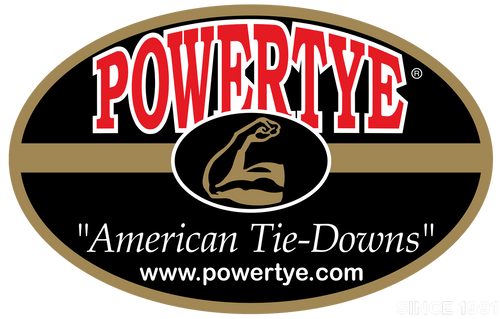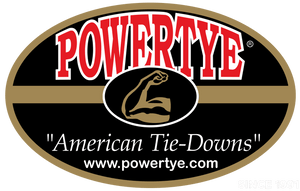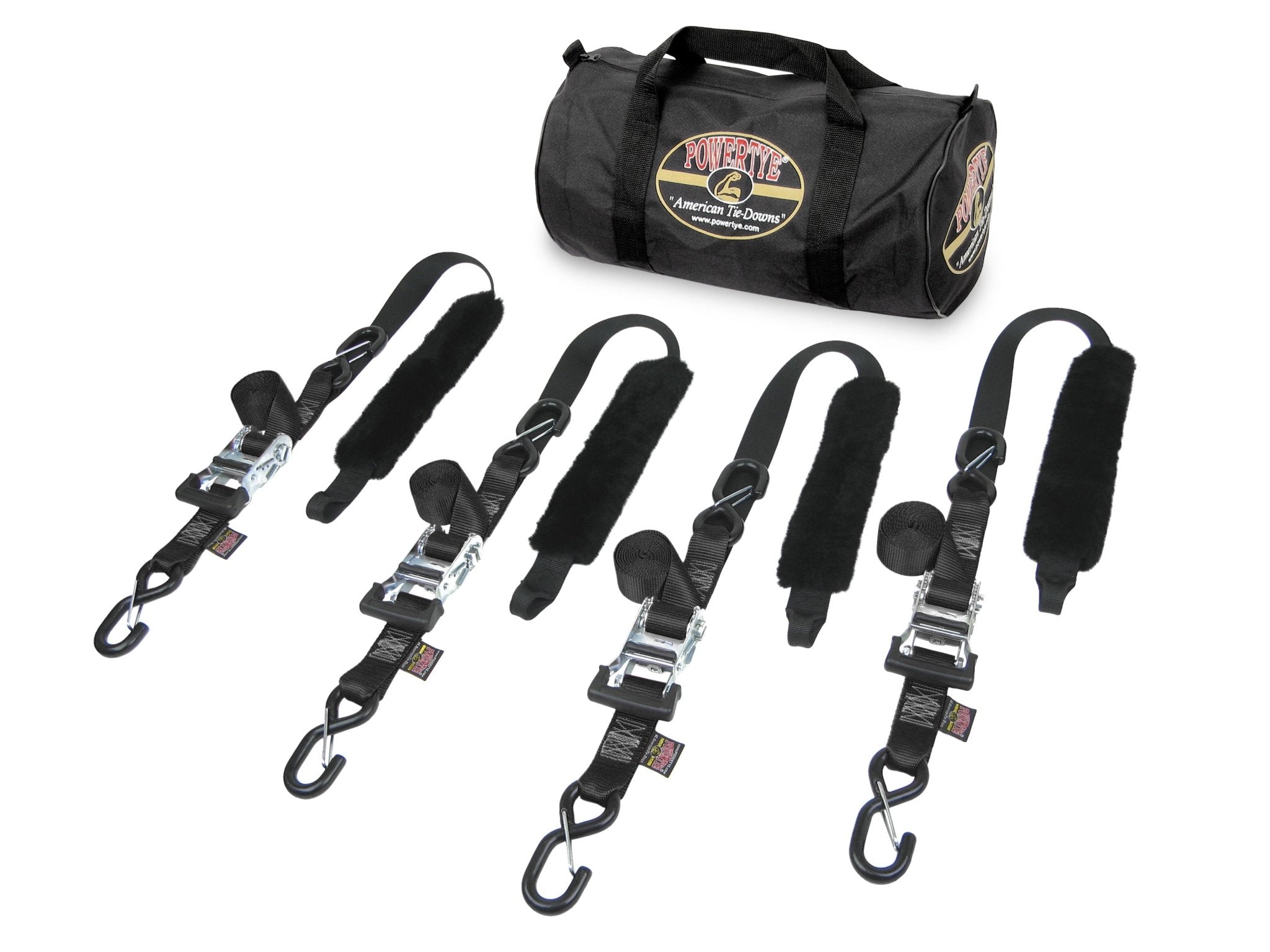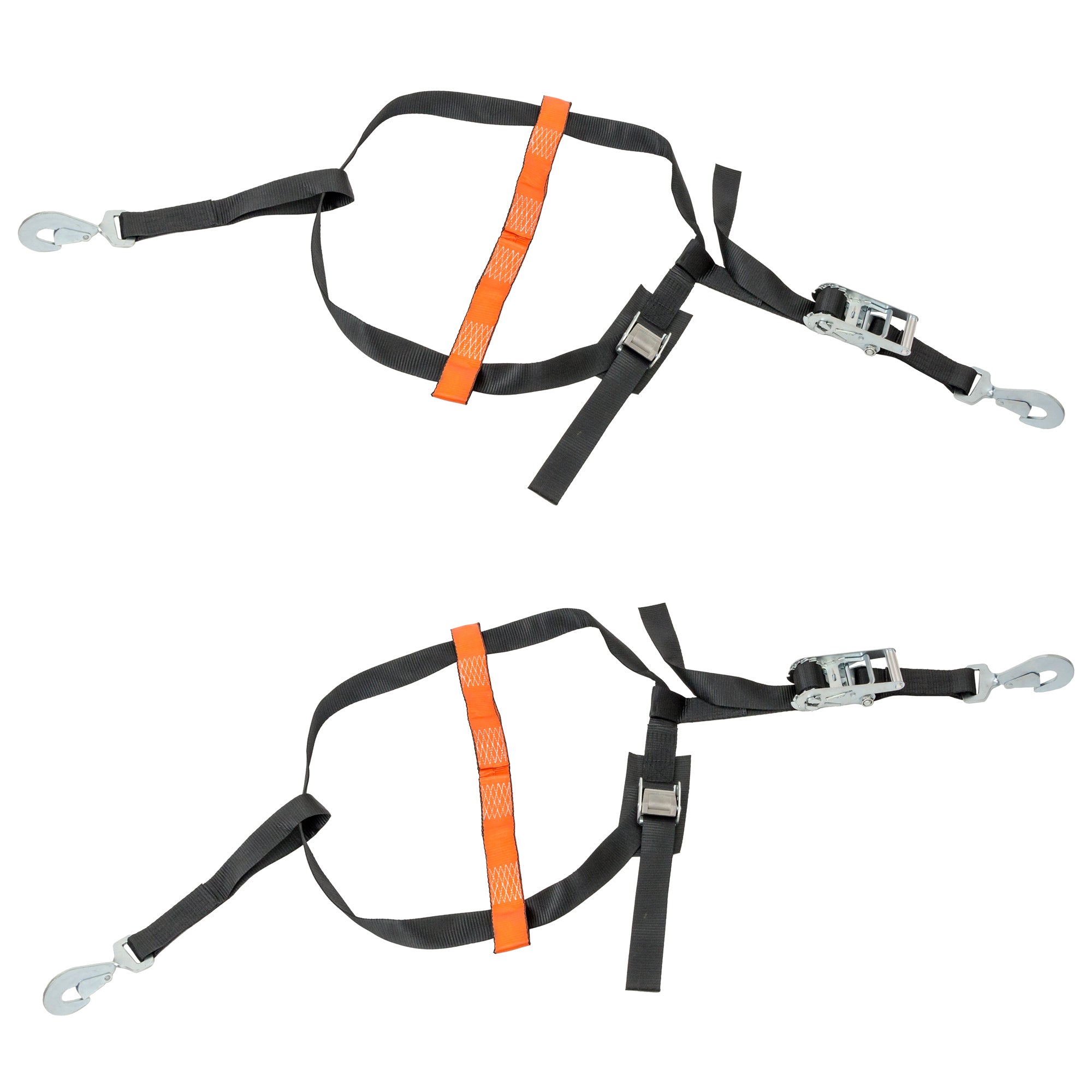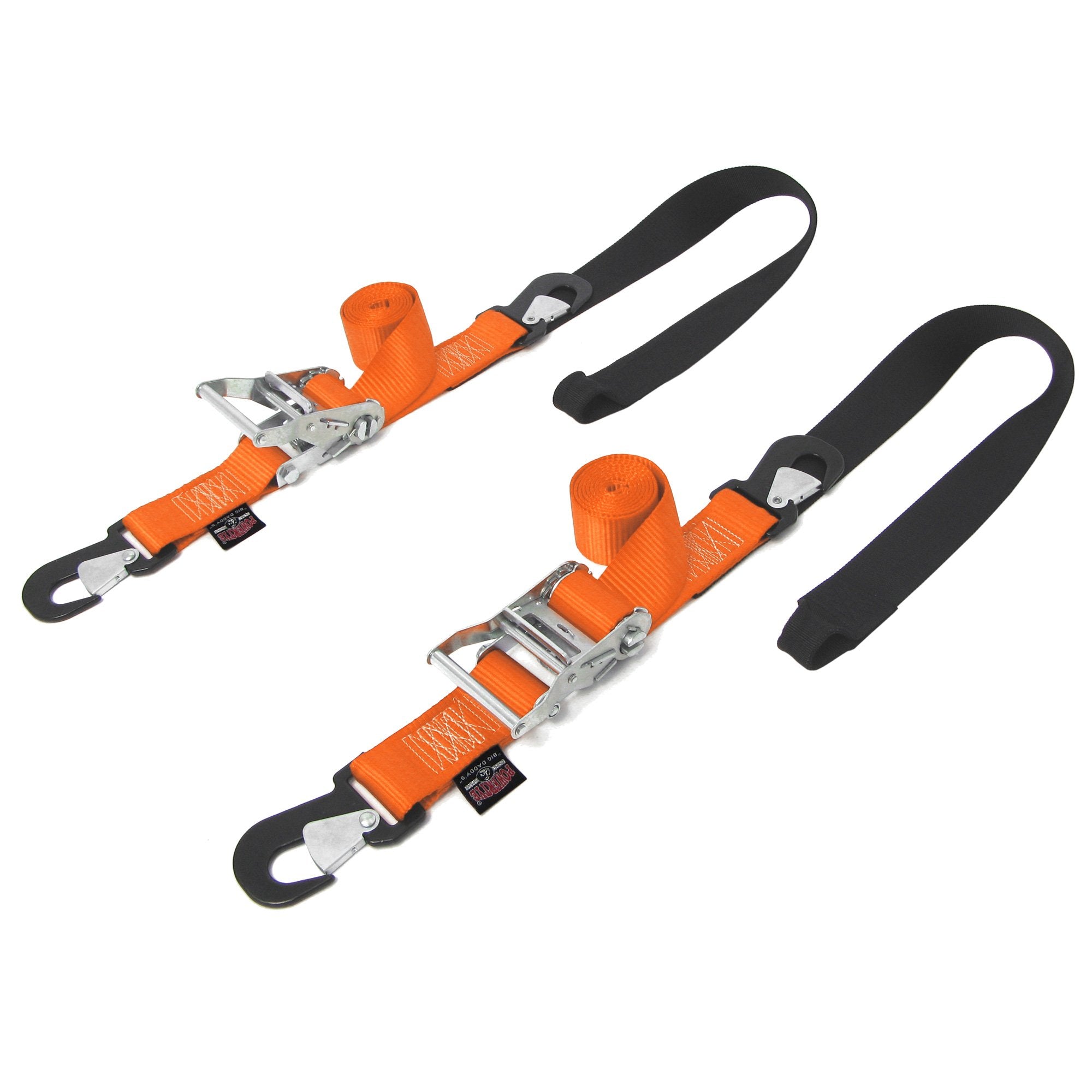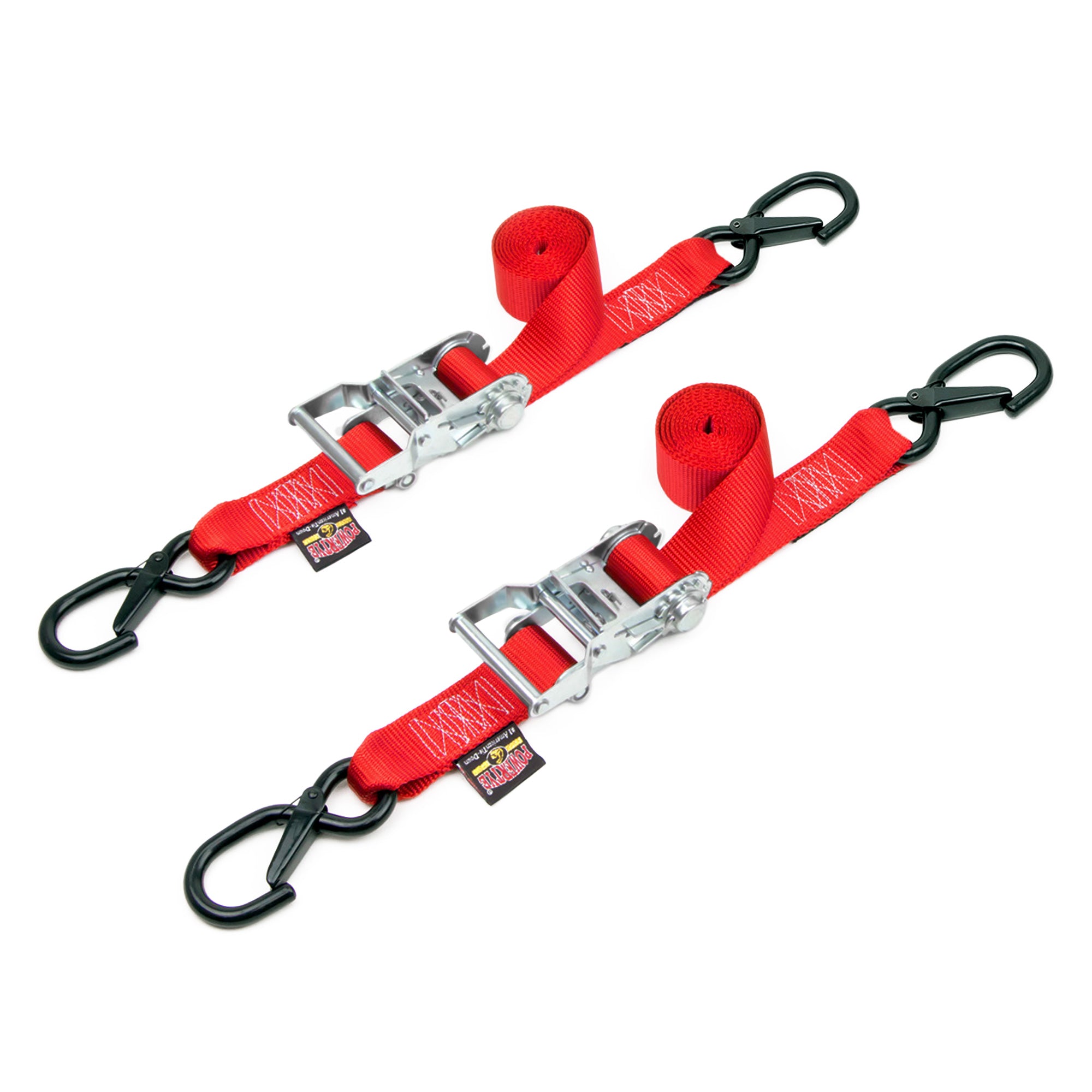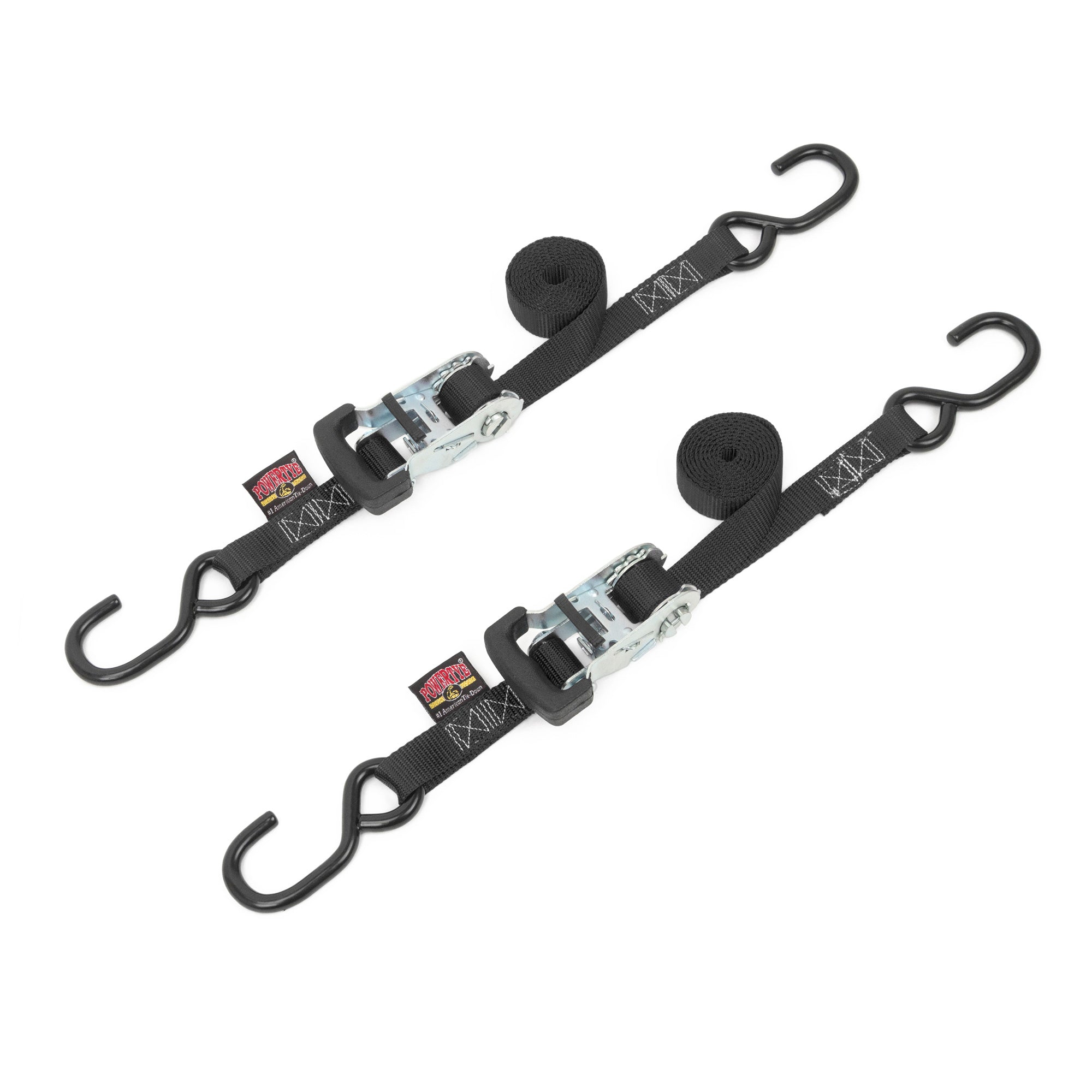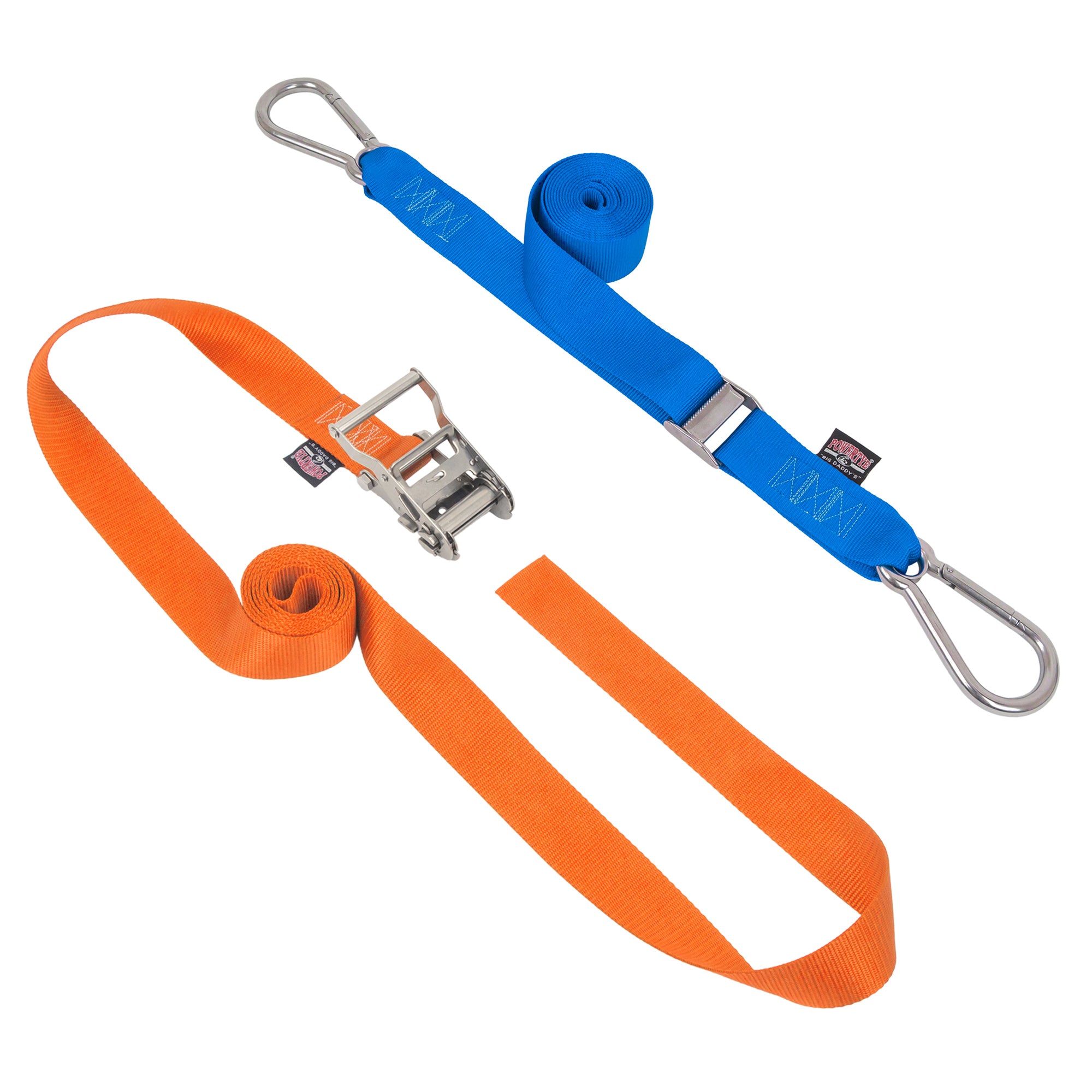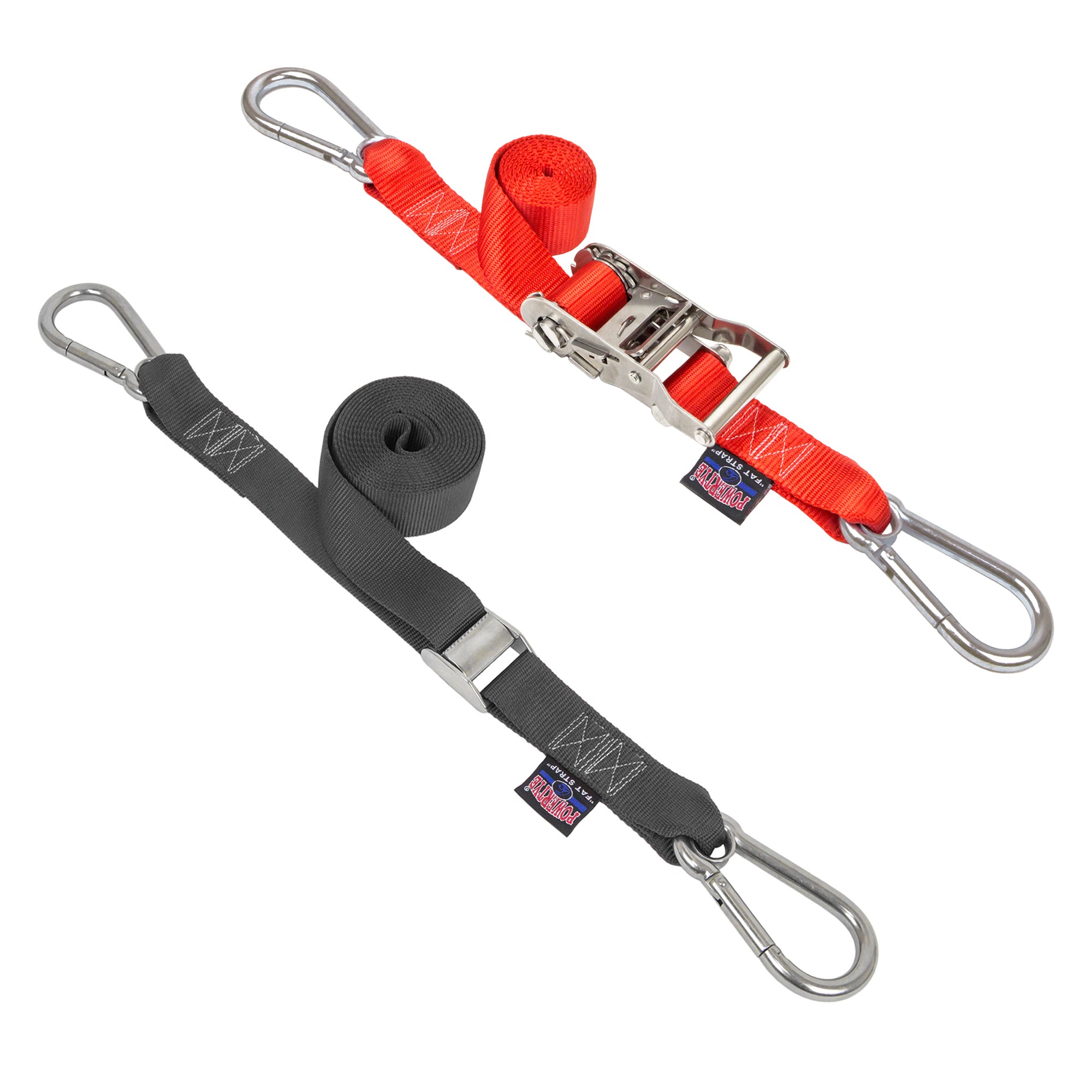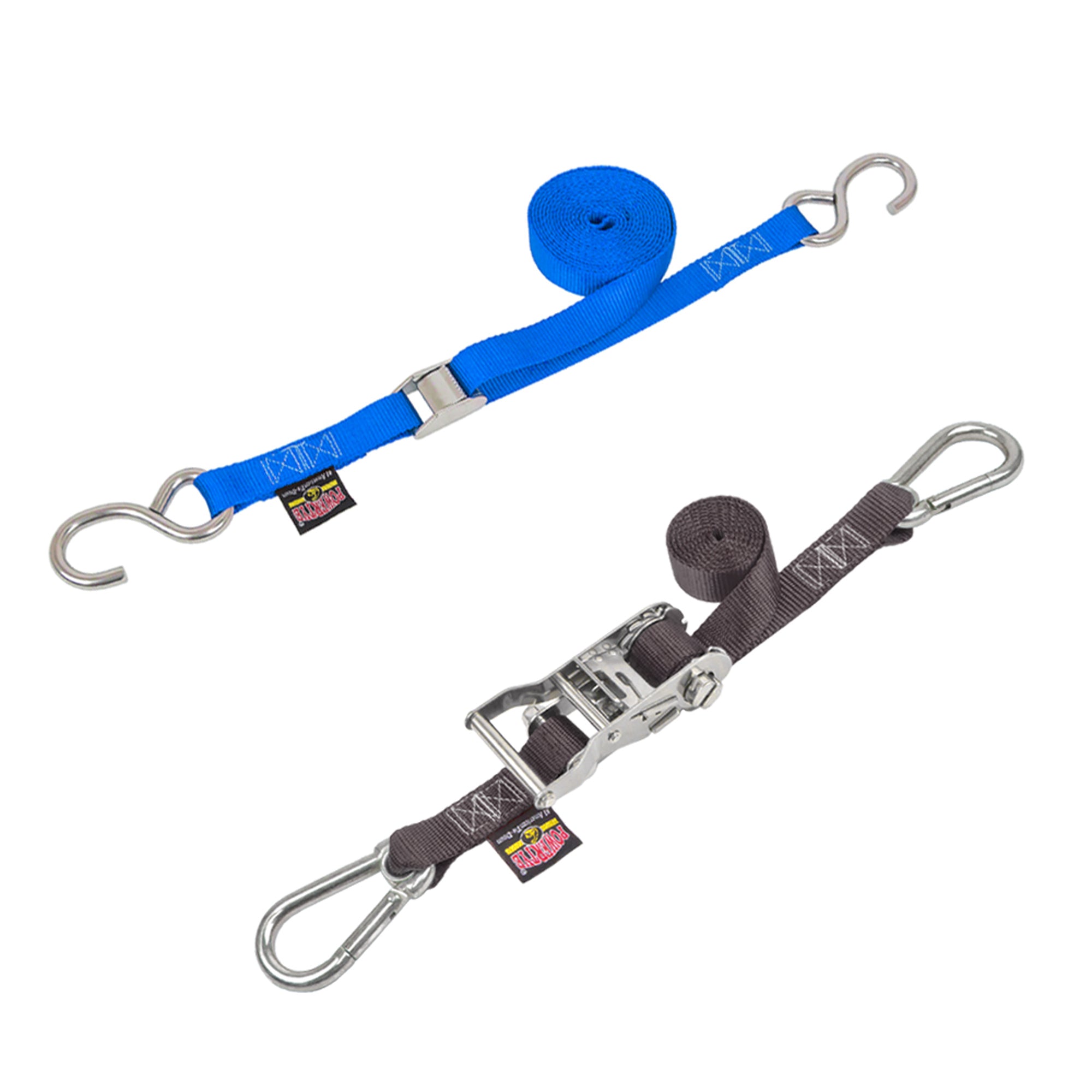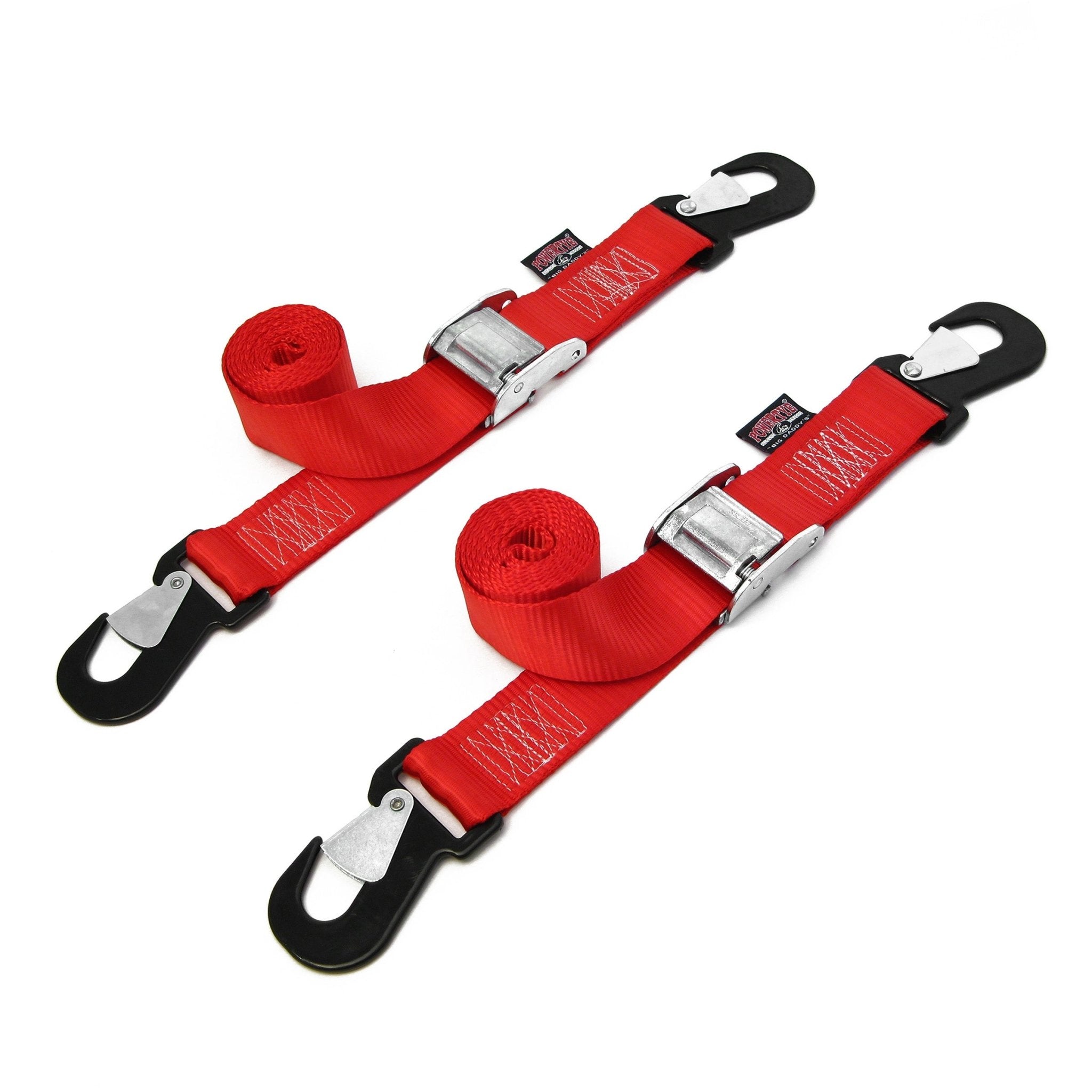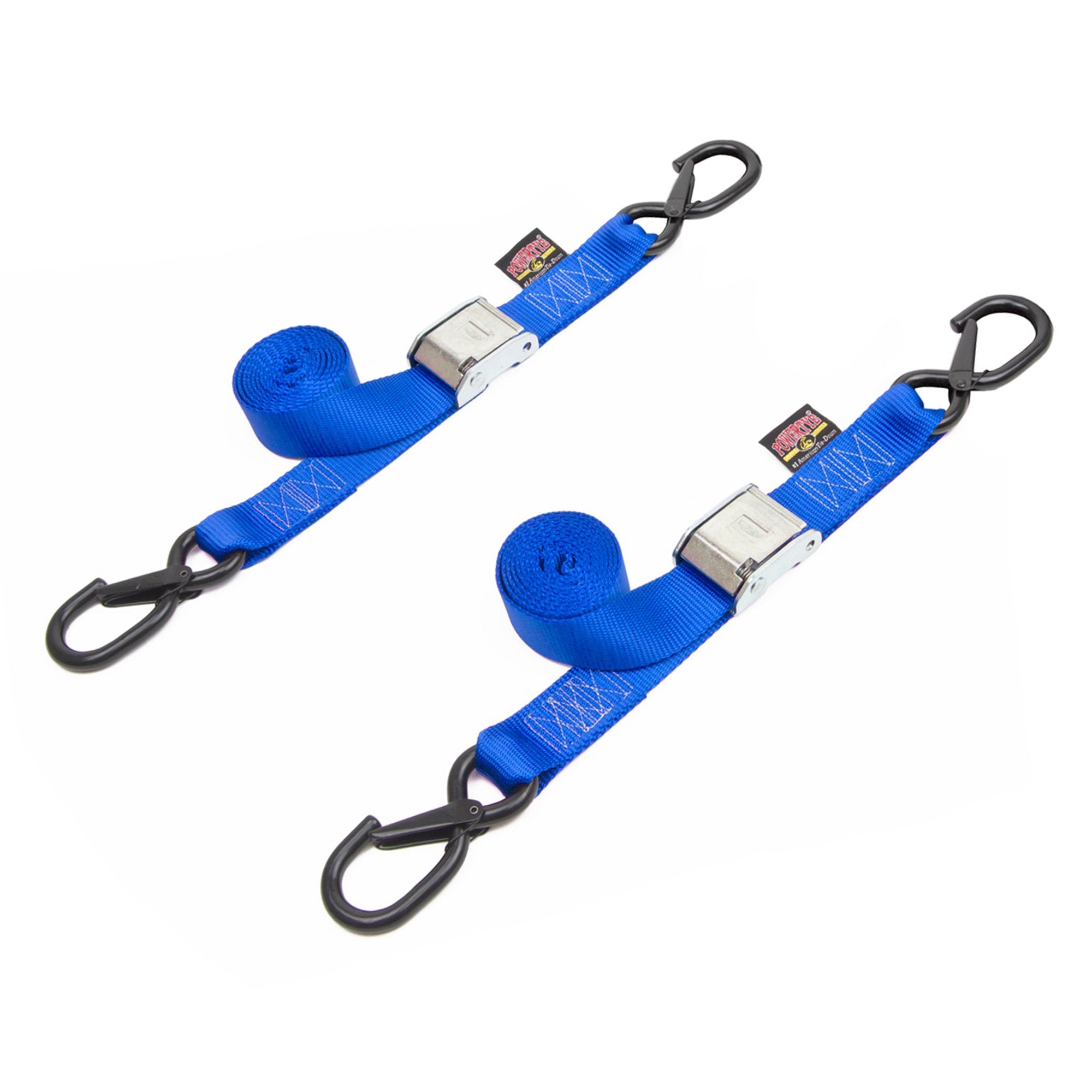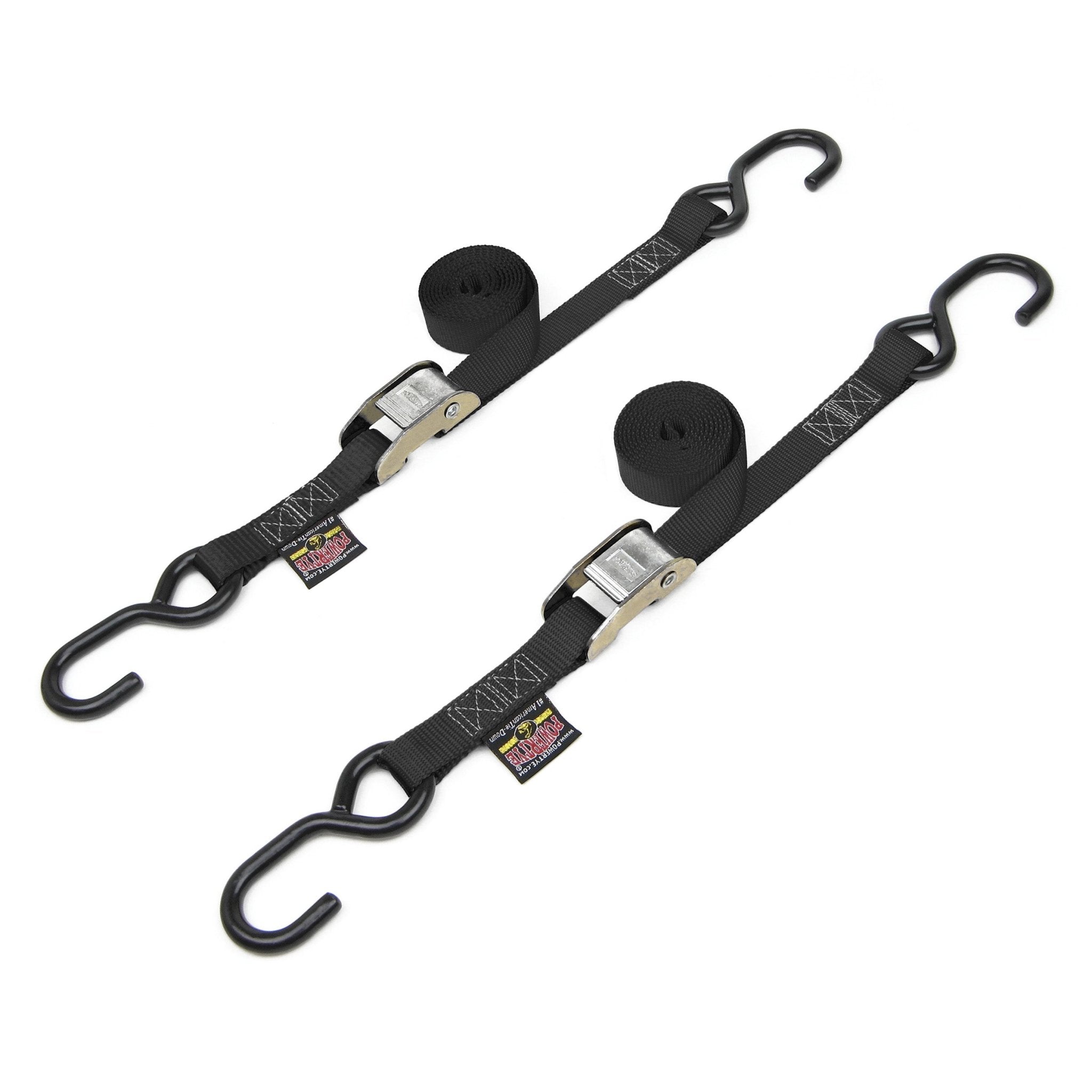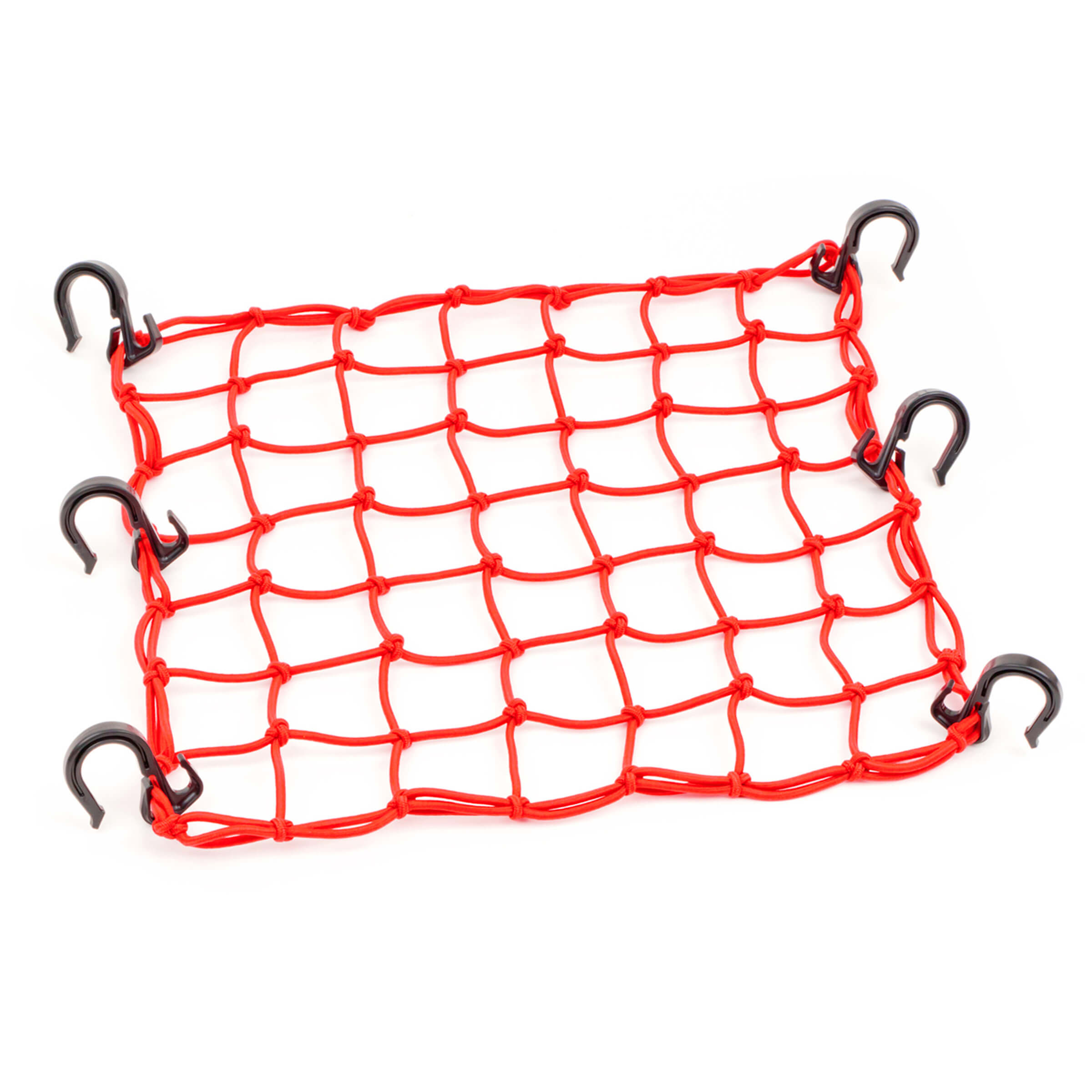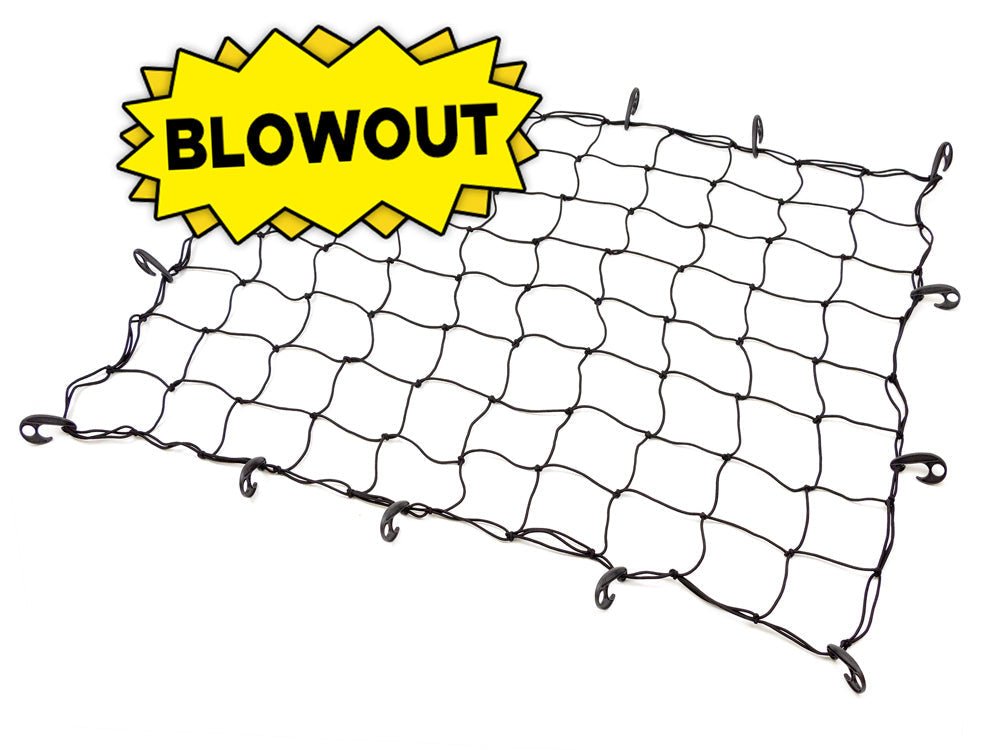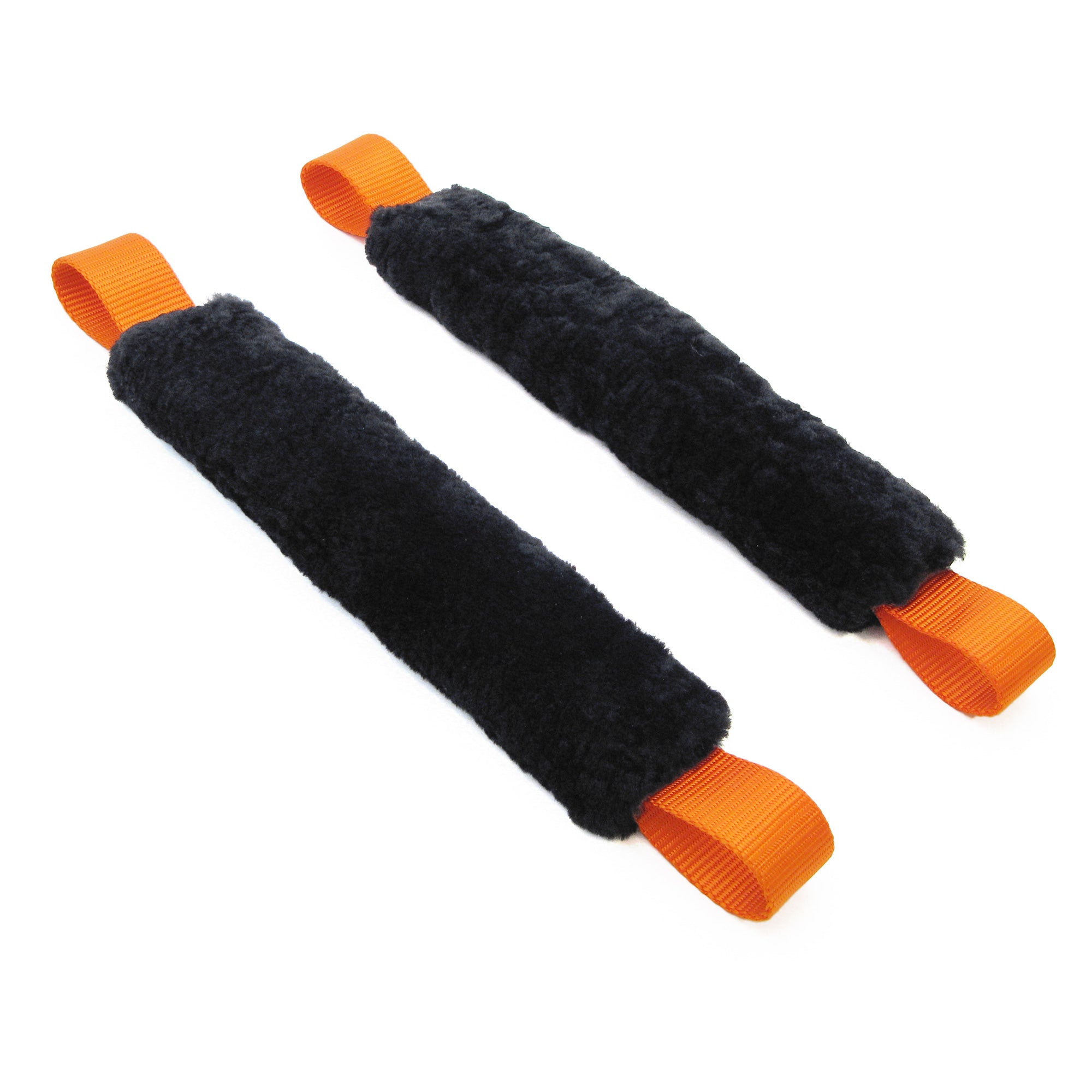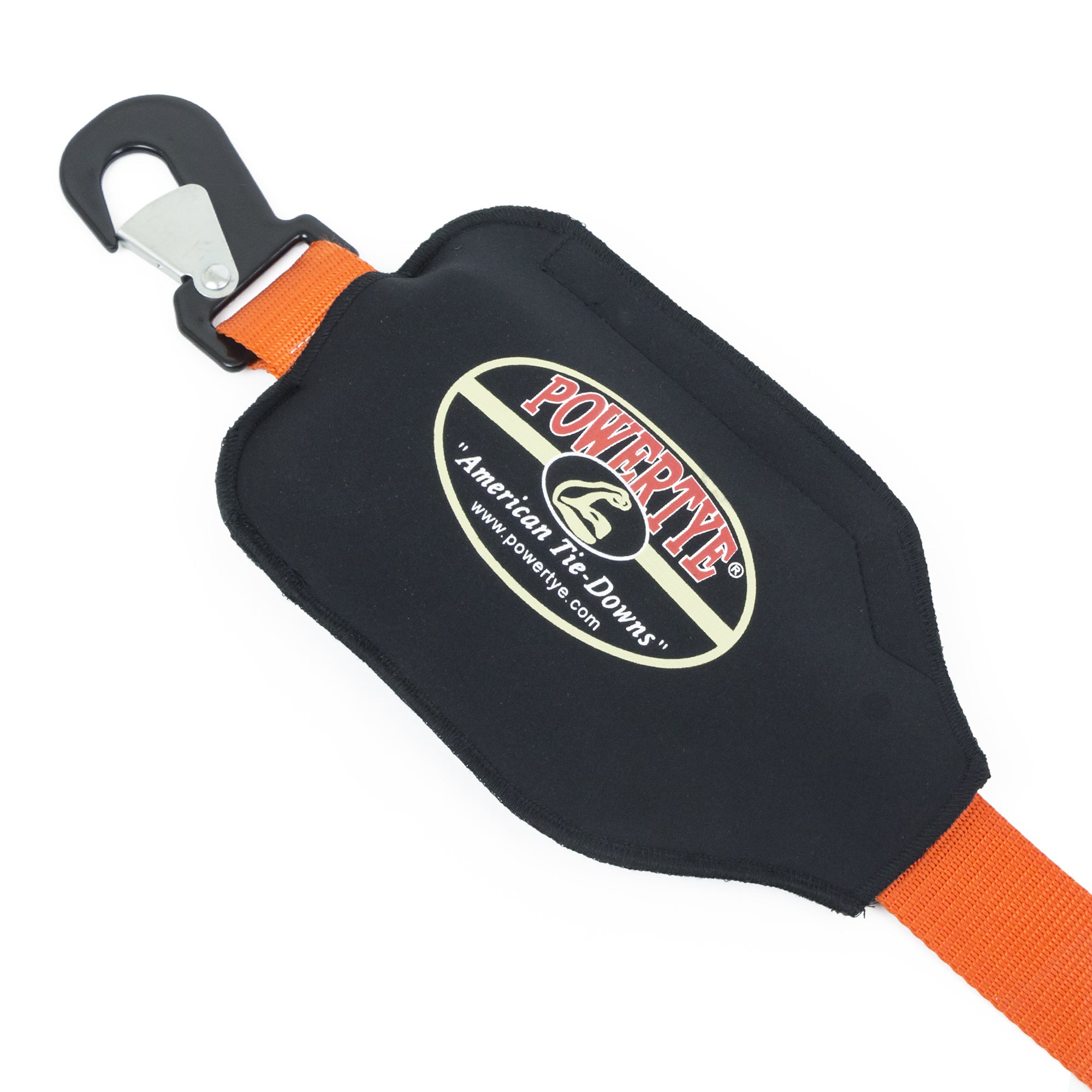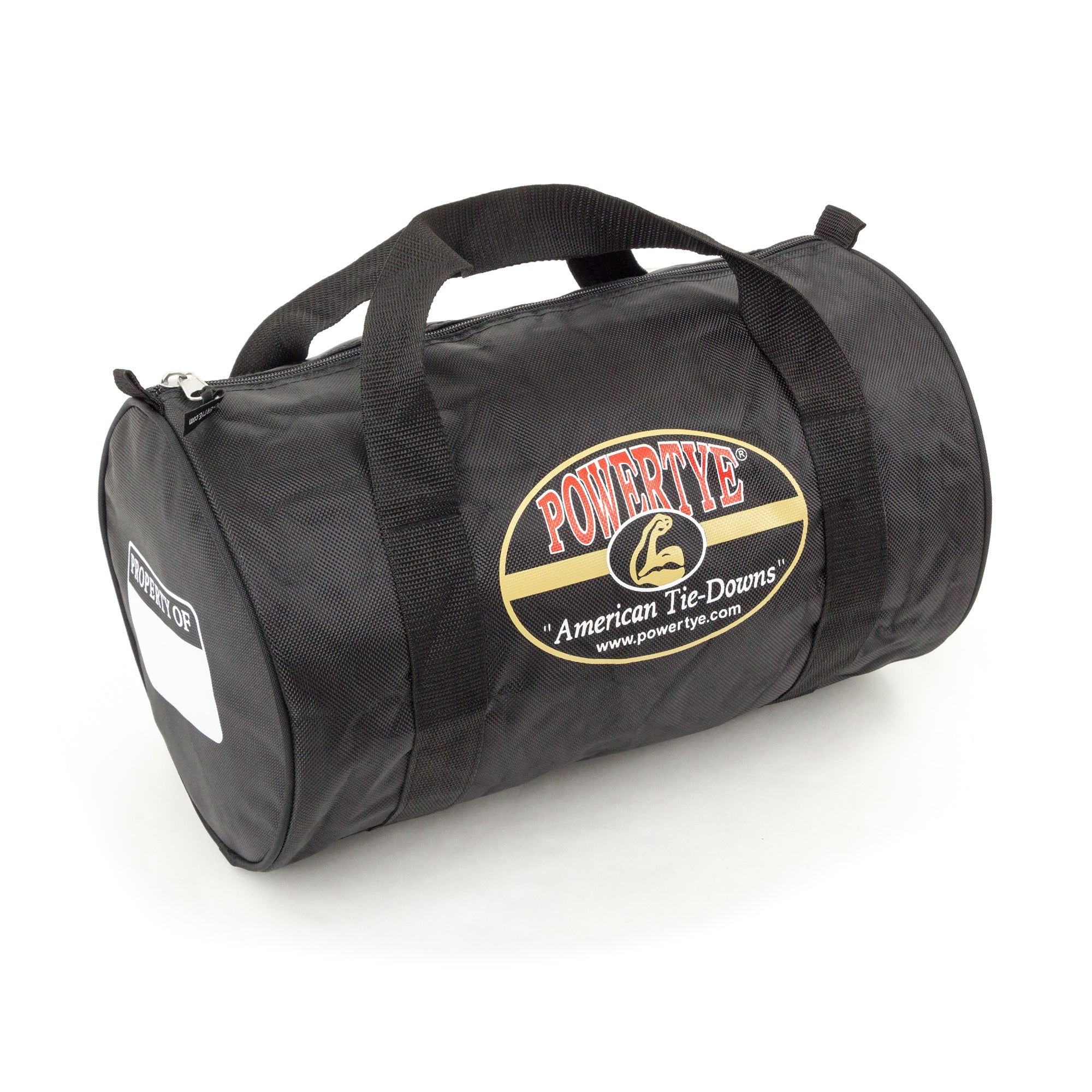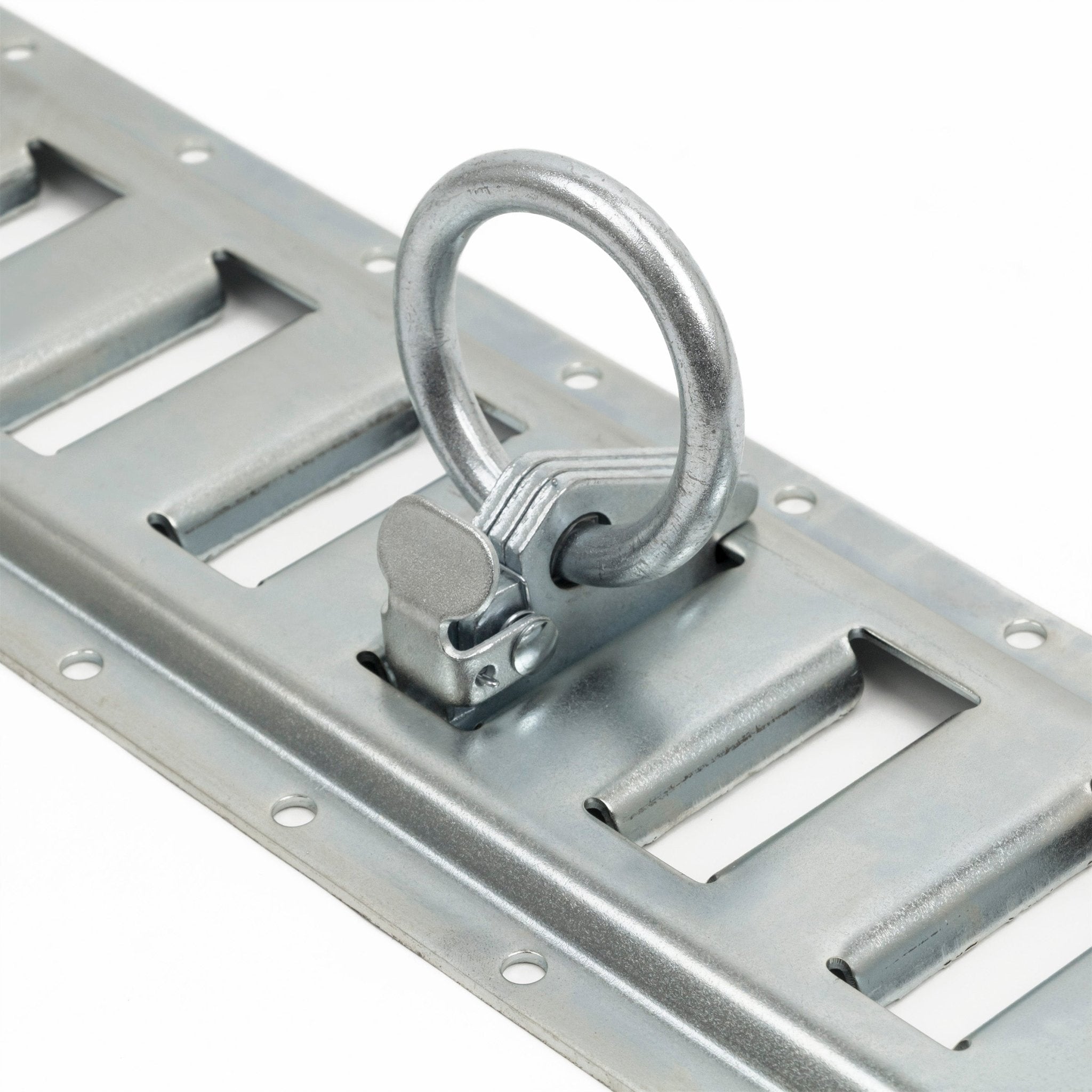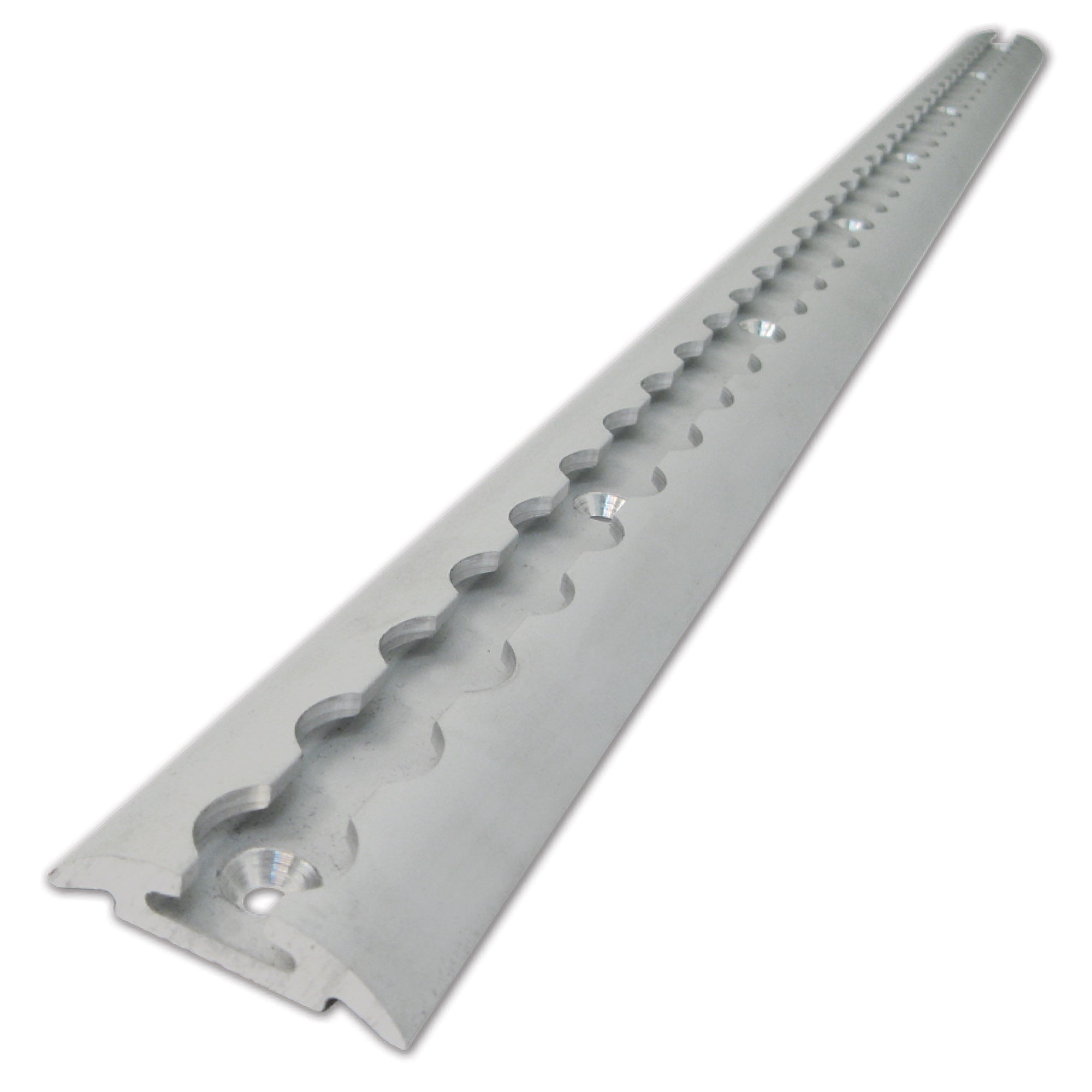Watercraft Ratchet Straps: Everything You Need to Know to Haul with Confidence
Whether you're heading to the lake with your jet ski or hauling your fishing boat back from the marina, one thing you cannot afford to overlook is your tie-down system. Watercraft ratchet straps are more than just gear — they are essential tools that keep your investment secure on the road. Without them, you risk damage to your craft, your trailer, and your peace of mind.
In this complete guide, we will explore what makes a great ratchet strap for watercraft, how to use them correctly, and why PowerTye straps are a trusted choice for riders, boaters, and haulers across the country.
What Are Watercraft Ratchet Straps?
Watercraft ratchet straps are heavy-duty tie-downs designed to secure boats, jet skis, and other personal watercraft to a trailer. These straps use a ratcheting mechanism to apply strong, controlled tension and keep your load from shifting during transport.
They are typically made from polyester webbing with metal ratchets and hooks. The best models are built to withstand road vibration, harsh weather, and repeated use around salt or freshwater environments.
Why Ratchet Straps Are Ideal for Watercraft
When you're hauling something as valuable as a boat or jet ski, using ropes or cheap bungee cords is not an option. Ratchet straps give you the holding power and control that watercraft hauling demands.
Here’s why they stand out:
-
High Tension Control: Ratchets let you apply more pressure than cam buckles, helping you create a tight, secure hold that resists bounce and sway.
-
Reliable Grip Over Long Distances: Unlike knots or clips that loosen with vibration, ratchet straps hold their tension over miles of road.
-
Durable in Marine Environments: Quality ratchet straps resist water, UV rays, and salt exposure, all common in boating environments.
- Quick Release: Once you reach your destination, the ratchet mechanism allows for fast and easy unloading without cutting or untying.
Top PowerTye Ratchet Straps for Watercraft Hauling
PowerTye offers a range of high-quality ratchet straps that are ideal for securing personal watercraft, jet skis, small boats, and even trailers or gear you bring along for the ride.
Here are some of the top picks:
1. 1.5" Ratchet Straps with S-Hooks
-
Best for: Jet skis, small boats, and utility gear
- Features:
- 4,500 lb rated strap strength
- Heavy-duty ratchet with wide handle
- Vinyl-coated S-hooks to protect surfaces
- Optional soft-tye extension for handlebars or cleats
- Why it's great: Easy to handle, high holding power, and built in the USA
2. 1.5" Ratchet Straps with Latch Hooks
-
Best for: Watercraft with integrated tie-down points
- Features:
- Secure latch hooks stay locked in place during transport
- Great for trailers with built-in anchor points or rails
- Same heavy-duty build and webbing as other PowerTye straps
- Why it's great: Latch hooks offer extra security when driving over rough terrain
3. 2" Ratchet Straps
-
Best for: Larger boats or gear-hauling trailers
- Features:
- 10,000 lb max strength
- Oversized hardware for serious holding power
- Optional flat hooks or wire hooks
- Why it's great: For users hauling heavier watercraft or full equipment loads, this strap brings industrial-grade confidence
Choosing the Right Watercraft Ratchet Strap
Not all watercraft require the same setup. Choosing the right ratchet strap depends on the type of boat or jet ski you have, the trailer design, and how far you plan to haul.
Consider the following when selecting your setup:
1. Weight of the Watercraft
Heavier boats require stronger webbing and larger ratchets. For jet skis or small aluminum boats, 1.5" straps are often more than enough. For heavier fiberglass or deep-V boats, you may want 2" straps.
2. Number of Tie-Down Points
Most setups include at least three tie-downs: one at the bow and two at the rear. Some larger setups may use side straps across the gunwale or transom.
3. Hook Style
-
S-Hooks: Versatile and easy to use. Ideal for standard trailer anchor points.
-
Latch Hooks: More secure and less likely to pop off under vibration or during sudden stops.
- Soft-Tye Ends: Protect painted or padded areas by looping around handlebars or rails.
4. Strap Length
Make sure your strap length allows you to reach your tie-down points without excessive slack. PowerTye straps come in multiple lengths to match different trailer sizes and boat widths.
How to Secure a Watercraft Using Ratchet Straps
Even the best straps cannot save a bad setup. Here’s how to properly use your watercraft ratchet straps to keep your load secure and balanced:
Step 1: Load the Watercraft Evenly
- Center the boat or jet ski on the trailer
- Check that the hull rests evenly on the bunks or rollers
- Ensure the bow meets the trailer stop without extra space
Step 2: Attach the Bow Strap
- Use a ratchet strap to secure the bow eye to the trailer frame or winch stand
- Apply tension so the craft cannot roll forward, but avoid bending the bow downward
Step 3: Attach the Transom Straps
- Connect one strap on each side of the transom, running down to trailer anchor points
- Cross the straps in an "X" if your trailer layout allows
- Tighten both evenly to reduce bounce and sway
Step 4: Secure Additional Points
- For wider boats, consider adding a gunwale strap across the top
- For kayaks or gear loads, use a cargo net or additional tie-downs as needed
Step 5: Check Tension and Hook Security
- Bounce the trailer gently to ensure nothing shifts
- Make sure all hooks are secure and facing the right direction
- Tie off excess webbing to prevent flapping or tangling
Best Practices for Ratchet Strap Maintenance
Good gear deserves proper care. PowerTye straps are built to last, but even the strongest webbing can wear out if ignored. Here’s how to keep your ratchet straps in top condition:
-
Rinse After Saltwater Exposure: Always rinse with fresh water after use near the ocean or salt-treated roads
-
Dry Before Storage: Wet straps can mildew or weaken over time. Let them dry completely
-
Inspect Regularly: Look for fraying, fading, or corrosion on the hardware
-
Replace When Worn: If any strap shows signs of damage, retire it before it fails
- Store in a Cool, Dry Place: Keep them out of the sun when not in use to prevent UV breakdown
Common Ratchet Strap Mistakes and How to Avoid Them
Ratchet straps are simple tools, but even experienced haulers can make mistakes. Here are some of the most common errors and how to avoid them:
1. Using Only the Winch Strap
The winch is for pulling the boat onto the trailer, not for transport security. Always add separate bow and transom straps.
2. Over-Tightening the Ratchet
Too much pressure can crush fiberglass, deform padding, or damage decals. Tighten only until snug.
3. Skipping Protective Loops
Hooks rubbing directly on painted metal or soft pads can cause scratches. Use soft-tyes or padding to protect your finish.
4. Forgetting to Tie Off the Ends
Loose webbing flapping in the wind can unravel or whip against your boat, causing wear or damage.
5. Relying on Worn or Cheap Straps
If your tie-downs are several years old or came in a budget kit, check their load rating and condition before trusting them with your watercraft.
Why PowerTye Ratchet Straps Stand Out
When it comes to hauling your boat or jet ski, not all ratchet straps are built the same. PowerTye straps are designed, tested, and manufactured in the USA using premium materials and industry-leading construction standards.
Here’s what sets PowerTye apart:
-
Built Tough: With high-strength polyester webbing and industrial-grade stitching, these straps are made to perform under stress
-
Smart Hardware: Coated S-hooks and latch hooks prevent scratching and stay locked in place
-
Versatile Options: Multiple lengths, hook styles, and color options let you build a setup that fits your needs
-
Soft-Tye Friendly: Many straps come with integrated Soft-Tye loops that protect handlebars, cleats, or painted surfaces
- Made in the USA: Quality control you can count on, and products that meet strict performance standards
Who Should Be Using Watercraft Ratchet Straps
Ratchet straps are the go-to tie-down system for:
- Jet ski owners hauling to and from the lake
- Boat owners trailering fishing or recreational boats
- Outdoor enthusiasts with kayaks or paddleboards on trailers
- Marina staff transporting watercraft between docks and storage
- Anyone hauling gear on flatbeds, open trailers, or enclosed haulers
If your load needs to stay put on the road, ratchet straps are the tool for the job.
Conclusion: Ratchet Down and Ride Out
Your watercraft represents freedom, fun, and investment. The last thing you want is to risk damage during transport. Watercraft ratchet straps give you control, security, and confidence, whether you’re hauling across town or across the state.
With PowerTye, you're not just buying a strap. You're investing in peace of mind, built-in reliability, and tools that keep your adventures rolling.
Choose smart. Haul safe. Strap it down with PowerTye.
